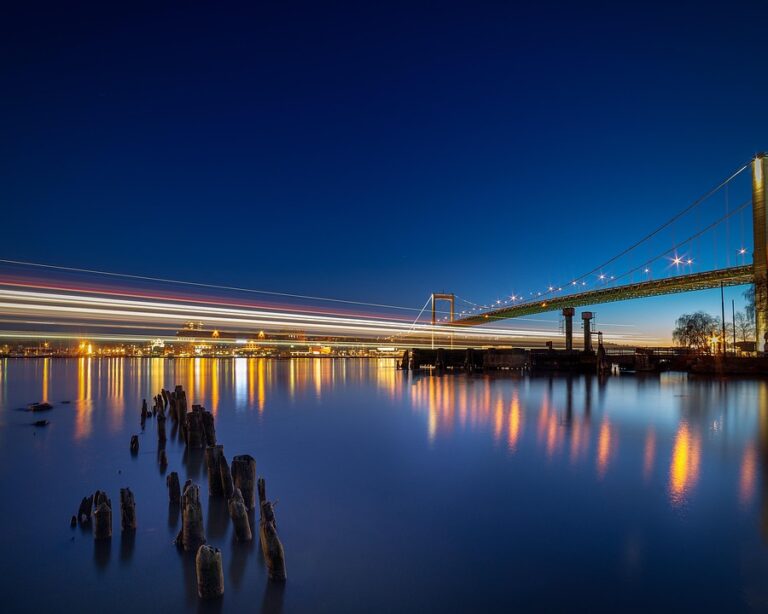Urban Exploration: Transforming Abandoned Sites into Art
Urban decay often paints a hauntingly beautiful picture of civilization’s forgotten past. From crumbling warehouses to decrepit amusement parks, these abandoned sites have become a canvas for explorers and artists. The movement known as urban exploration has grown in popularity, leading to a resurgence in interest surrounding these decaying spaces. As more people venture into forgotten areas, they’re not only documenting their finds but transforming them into remarkable displays of art that breathe new life and attention into once-neglected places.
The Rise of Urban Exploration
Urban exploration (often abbreviated as "urbex") involves exploring abandoned structures, forgotten sites, and decaying landscapes. According to a recent report by The Urban Explorer Society, over 70% of urban explorers cite the aesthetic charm and photographic opportunities of these locations as their primary motivation. The activity has surged in the past decade, particularly on social media platforms where users share their findings, effectively turning their explorations into collective experiences.
The Artistic Transformation of Abandoned Spaces
Once mere shelters for squatters, many abandoned sites are being transformed into art hubs. Graffiti artists, photographers, and even designers are increasingly collaborating to revitalize these forgotten places. The contrast between nature reclaiming its space and the art added by human hands visually narrates a story of duality—one where history meets contemporary expression.
For example, the Ferris wheel at the Spreepark in Berlin—a relic of a once-thriving amusement park—has become an iconic symbol in the urban exploration community. It stands as a melancholic monument to past joy, yet serves as a canvas for artistic expression. Various street artists have transformed its rusting materials into vibrant displays of creativity, attracting photographers from around the globe.
Imagery and its Influence on Perception
Creating a visual narrative through photography plays a crucial role in elevating urban exploration to an art form. The images captured within these decaying environments evoke emotions and curiosity while inspiring viewers to appreciate the beauty in neglect.

Alt Text: Urban exploration showcasing the beauty of decay.

Alt Text: Urban exploration featuring graffiti art in an abandoned warehouse.
In a survey of urban explorers, 58% reported that their experiences often led to a profound appreciation for the juxtaposition of decay and artistic revival. This connection offers a striking commentary on society’s relationship with progress and neglect.
Preservation vs. Urban Renewal
One interesting aspect of urban exploration is its relationship with urban renewal efforts. As artists and explorers draw attention to decay, they inadvertently influence conversations about preservation. Many cities grapple with the paradox of demolishing dilapidated structures for new developments while also recognizing their cultural and historical significance.
Consider Detroit, a city that has seen massive population decline and an accompanying surge in abandoned properties. Activists, urban explorers, and artists have transformed parts of Detroit into a thriving art scene, utilizing many of these abandoned buildings for community events, gallery spaces, and art installations. Such actions have sparked discussions on how urban decay can inform future urban planning and design.
Engaging with Urban Decay
If you’re intrigued by urban exploration, it’s paramount to approach these adventures with respect and responsibility. Here are a few tips for those eager to delve into their own explorations:
- Research Locations: Ensure you’re aware of the history and potential dangers of your chosen site.
- Go in Groups: Exploring with friends not only enhances safety but also enriches the experience.
- Capture Responsibly: Documenting is essential, but be respectful of the space. Avoid vandalism or damaging the property.
Conclusion
Urban exploration is transforming abandoned sites into platforms for artistic expression and social commentary. As explorers and artists shed light on these neglected spaces, they invite society to engage with our shared history and aesthetic appreciation of decay. This interaction between the old and the new revitalizes culture and inspires reflection on urban development. With continued support, urban exploration can foster a broader discussion about preservation and the importance of art in public spaces.
For more insights on urban culture, you might enjoy our articles on The Art of Street Graffiti and Preserving Historic Sites. Additionally, you can explore resources from The Urban Exploration Society for a deeper dive into this fascinating community.
Urban exploration is more than merely visiting abandoned sites; it is an artistic movement that transforms decay into a form of beauty—a statement that explodes with creativity and invites dialogue about our urban environments. So next time you pass by a crumbling wall or rusting fence, consider what stories lie within.


